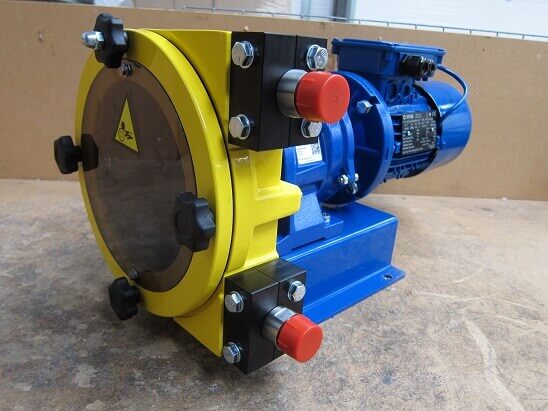Heavy Duty Peristaltic Pump for Abrasive Concrete Mix
 Industry Background
Industry Background
Precast concrete is used to manufacture a variety of products and components in the construction industry, it is made by casting concrete into a mold, followed by a number of quality checks in a temperature controlled environment where the product is left to cure, all this is done at the factory prior to being used by the customer, hence the term precast. Architectural cladding and structural precast products are two of the main uses for precast concrete and have been for centuries, this is the same construction technology used to build Ancient Rome although the material ingredients used by the Romans were different, the concept remains the same.
Terrace units, beams, bridges, stairs, slabs and columns are some of the main structural components made from precast, architectural concrete cladding is extensively used nowadays as precast concrete can be molded into almost anything and can have any colour. From reconstructed stone, natural stone to 3D shape cladding features, the design types, styles and combinations that can be achieved with this product are truly unlimited. It goes without saying that the strength and integrity of these components is extremely important, thus precision is required when manufacturing them.
Our Customer's Feed Pump Requirement
Our customer required a highly reliable feed pump to handle their product, a slurry silica sand water mixture which at times can have a relatively high dry content percentage, this means the equipment must to be able to handle semi dry matter as well as being able to run dry for long periods as the quantity of liquid going through it is fairly low.
Our AMP16DA41 Peristaltic Pump Solution
Our peristaltic pump range, also known as a roller pump or hose pump was the answer to this customer’s problem, the unit supplied “an AMP16DA41” is a seal-less, compact ¾” peristaltic pump, capable of running dry indefinitely without incurring any damage to any of its components and designed to operate continuously for 24h if required. Being seal-less means the unit does not require liquid passing through it to cool down the shaft seal as many other pump technologies demand. It is excellent at handling cement sand slurry mixes that are extremely dense, dry and abrasive. Our solution included an integrated variable speed drive on the motor with forced cooling, this combination allows our customer to operate the pump at incredibly low speeds, as low as 3 Hz and 1 RPM to be precise, meaning capacity range of 5 -188 litres per hour and a maximum design pressure of 8 bar. Having a such a wide flow range is a huge advantage for our customer as this means they can use our slurry pumps on various production lines which saves them money by not needing individual units performing specific capacities.
Details of the pump supplied to our customer are as follows:
Model: | |
Capacity: | 5 – 188 l/hr |
Max. Head: | 80 m |
Inlet/Outlet: | ¾” |





